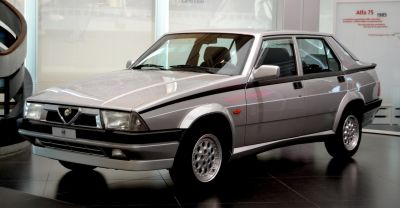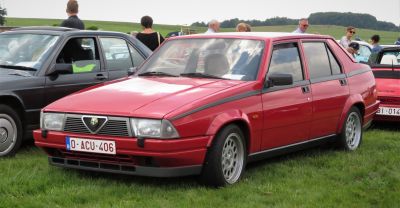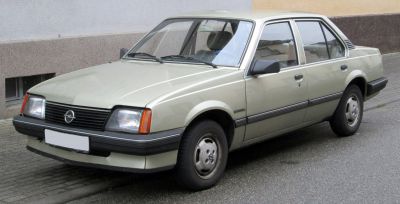 1973 Volkswagen Passat (B1) Dimensions, Size & Specs
1973 Volkswagen Passat (B1) Dimensions, Size & SpecsMeasurements of the 1973 Volkswagen Passat, engineered for optimal performance and comfort
| Dimensions | |
|---|---|
| Length: | 4290 mm168.9 in14.1 ft |
| Width: | 1615 mm63.6 in5.3 ft |
| Height: | 1359 mm53.5 in4.5 ft |
| Ground Clearance: | 107 mm4.2 in0.4 ft |
| Trunk Capacity: | 473 liter16.7 cu ft |
| Trunk Capacity (Max): | 1320 liter46.6 cu ft |
| Weight Specifications | |
| Curb Weight: | 905-920 kg1995-2028 lbs |
| Maximal permitted Weight: | 1330-1420 kg2932-3131 lbs |
| Tire Specifications | |
| Rims Size: | 13-inch rims:
|
| Tire Size: |
|
The Volkswagen Passat (B1), produced from 1973 to 1980, marked Volkswagen's introduction to the compact sedan market, combining practicality with efficient design. This first-generation Passat features a length of 4290 mm (approximately 169 inches), a width of 1615 mm (63.6 inches), and a height of 1359 mm (53.5 inches), positioning it firmly within the compact segment of its era. Weighing between 905 and 920 kilograms (1995 to 2028 pounds) curb weight, the Passat B1 balances weight and size for agile urban and highway performance, while a maximum gross vehicle weight ranging from 1330 to 1420 kilograms (2932 to 3130 pounds) allows for sufficient payload capacity. The vehicle rides on 13-inch rims sized at 5J x 13, paired with 175/70 R13 tires, which offer a comfortable ride and manageable handling characteristics. Ground clearance is modest at 107 mm (4.2 inches), typical for sedans of the time with a focus on on-road driving stability rather than off-road capability. One of the noteworthy practical features of the Passat B1 is its generous luggage capacity: the trunk offers 473 liters (16.7 cubic feet) of space with the rear seats upright, expanding impressively to 1320 liters (46.6 cubic feet) when the rear seats are folded down. This flexibility made it a practical choice for families and daily use, enhancing its appeal as a versatile sedan. Overall, the Volkswagen Passat B1 combines compact dimensions, moderate weight, and useful cargo space, reflecting early 1970s automotive trends focused on efficiency and functional design in the sedan category.
Discover the standout features that make the 1973 Volkswagen Passat a leader in its class
Have a question? Please check our knowledgebase first.
The Volkswagen Passat B1, produced from 1973 to 1980, measures 4290 mm (168.9 inches) in length, 1615 mm (63.6 inches) in width, and 1359 mm (53.5 inches) in height. These dimensions position it as a compact sedan of its era, providing a balanced footprint for urban and highway driving with ample interior space for passengers.
The curb weight of the VW Passat B1 ranges from 905 kg to 920 kg (approximately 1995 to 2028 pounds), depending on configuration and trim. The maximum allowable weight varies between 1330 kg and 1420 kg (2932 to 3130 pounds), accommodating passengers and cargo safely within the vehicle’s design limits.
The Volkswagen Passat B1 provides a substantial luggage capacity of 473 liters (16.7 cubic feet) with the rear seats upright. When the rear seats are folded down, luggage space expands significantly to 1320 liters (46.6 cubic feet), allowing for the transportation of larger items and increased versatility for carrying cargo.
The Volkswagen Passat B1 has a ground clearance of 107 mm (4.21 inches). This relatively low clearance supports stable handling and improved aerodynamics but may limit the car’s ability to navigate rough or uneven terrain. It's best suited for well-maintained roads and typical urban conditions.
Yes, the VW Passat B1 fits comfortably into a standard single-car garage. With a length of 4290 mm (168.9 inches) and width of 1615 mm (63.6 inches), it is well within the typical garage dimensions, which usually measure about 6000 mm (236 inches) in length and 3000 mm (118 inches) in width, leaving enough room for door opening and movement around the vehicle.
The Passat B1 rides on 13-inch rims sized 5J x 13, fitted with tires sized 175/70 R13. These relatively modest tire dimensions complement the car’s compact build, delivering a comfortable ride with decent grip and handling for its time. The tire aspect ratio of 70 ensures a balance between ride comfort and responsive road feedback.
The Volkswagen Passat B1 was one of the early Passat models, effectively succeeding the Volkswagen Type 3 and representing a step into more modern midsize sedan territory in the VW lineup. While slightly larger than the compact Beetle and Type 3, the Passat B1 offered increased interior space and luggage capacity, marking Volkswagen's transition to more family-oriented cars with better practicality and refinement compared to their older, smaller sedans.
Compared to other midsize sedans of the 1970s, such as the Ford Taunus or Opel Rekord, the Volkswagen Passat B1 is somewhat more compact, particularly in width and height, but offers comparable length and competitive luggage capacity. This made the Passat B1 a practical choice in Europe, blending fuel efficiency and maneuverability with family-sized space.
With a curb weight between 905 and 920 kg (approximately 1995 to 2028 pounds), the Passat B1 is relatively lightweight for a midsize sedan, contributing to improved fuel efficiency and nimbleness on the road. The modest weight aids in responsive handling and lower fuel consumption—advantages particularly relevant in the 1970s when fuel economy gained increased importance.
The Volkswagen Passat B1 was primarily available as a sedan during its production span from 1973 to 1980. While other variants such as hatchbacks or station wagons became more prevalent in later Passat generations, the B1 focused mainly on a four-door sedan design which appealed to buyers seeking a practical family car with sleek lines typical of the early 1970s automotive styling.
Discover similar sized cars.

| Production: | 1985-1992 |
|---|---|
| Model Year: | 1988 |
| Length: | 4330-4420 mm170.5-174.0 in |
| Width: | 1630-1660 mm64.2-65.4 in |
| Height: | 1400 mm55.1 in |

| Production: | 1985-1990 |
|---|---|
| Model Year: | 1985 |
| Length: | 4330-4420 mm170.5-174.0 in |
| Width: | 1630-1660 mm64.2-65.4 in |
| Height: | 1400 mm55.1 in |

| Model Year: | 1982 |
|---|---|
| Length: | 4366 mm171.9 in |
| Width: | 1668 mm65.7 in |
| Height: | 1385-1395 mm54.5-54.9 in |

| Production: | 1982-1987 |
|---|---|
| Model Year: | 1982 |
| Length: | 4325 mm170.3 in |
| Width: | 1645 mm64.8 in |
| Height: | 1380 mm54.3 in |

| Production: | 2001-2012 |
|---|---|
| Model Year: | 2000 |
| Length: | 4330 mm170.5 in |
| Width: | 1650 mm65.0 in |
| Height: | 1402 mm55.2 in |
